
Written by Taylor Blanchard
I have a confession: the first time I pushed film, it was by accident. I had loaded our Canon AE-1 with Kodak Ektar 100, but forgot to change the camera’s ISO setting, which was set to 400.
We were in Los Angeles, and I shot the roll at the Santa Monica pier and a few spots in the city. Mid-way through the roll, I realized my error, but decided to shoot the entire roll at 400.
I could have developed the film normally for underexposed results, but I decided to have my lab push it 2 stops. I was pleasantly surprised: the grains were crunchy but not distracting, the contrast was pronounced, and the colors were punchy.
(Note: As a reminder, when you push film, you are underexposing the film, and then compensating for underexposure with extra development time. Here’s a good reminder of the basics if you need a primer).


Testing the Limits of Pushing Film
After my first time unintentionally pushing film, I limited subsequent intentional pushing to 1 or 2 stops and nothing beyond, and it wasn’t something I did often.
In fact, when I looked back through my shooting log, I saw that I’d only pushed a handful of times since that first roll: Kodak T-MAX 400; Cinestill BwXX (which I wouldn’t recommend pushing); Kodak Portra 800, and Tri-X and T-MAX 400, which I did for my comparison of the two stocks.
If I was shooting in low light, I would generally reach for Ilford Delta 3200 or Kodak T-MAX P3200 instead of choosing to push another film.




After my limited experience, I decided to test the limits of pushing film – going far beyond my comfort zone of 1 or 2 stops. I decided to use Ilford HP5+ because it’s renowned for how well it pushes.
Having shot a number of film comparisons, I knew the most difficult aspect was consistent lighting and framing. To minimize those variables, I decided to use my Intrepid 4×5 MKV with an Alien Bees studio light. I decided to shoot two scenes four times: box speed (400), +3 (3200). +4 (6400), and +5 (12800). I skipped over +1 and +2 because I figured those speeds were predictable (also I was low on sheet film).
After loading the 4×5 film in my film holders and carefully labeling each, I set up a still life scene in my living room with my grandmother’s china, cookies, and tea. I metered and decided that I should shoot at f8 to avoid an exposure longer than ½ second for the box speed shot (so I wouldn’t have to worry about reciprocity failure, which refers to the decreasing sensitivity of film for longer exposures).
I kept my aperture constant at f8 and changed the shutter speed for each shot. After the still life photos, my husband Marc sat for four photos, and I followed the same process.
I also shot two rolls of Ilford HP5+ in my Rolleiflex MX-EVS, one at +3 and +4. The first of these rolls I pushed by 3 stops taking head shots for a friend; the other roll I pushed by 4 stops shooting at a museum, restaurant, and in my darkroom. I simply wanted to get an idea for how it would work in real-life situations.

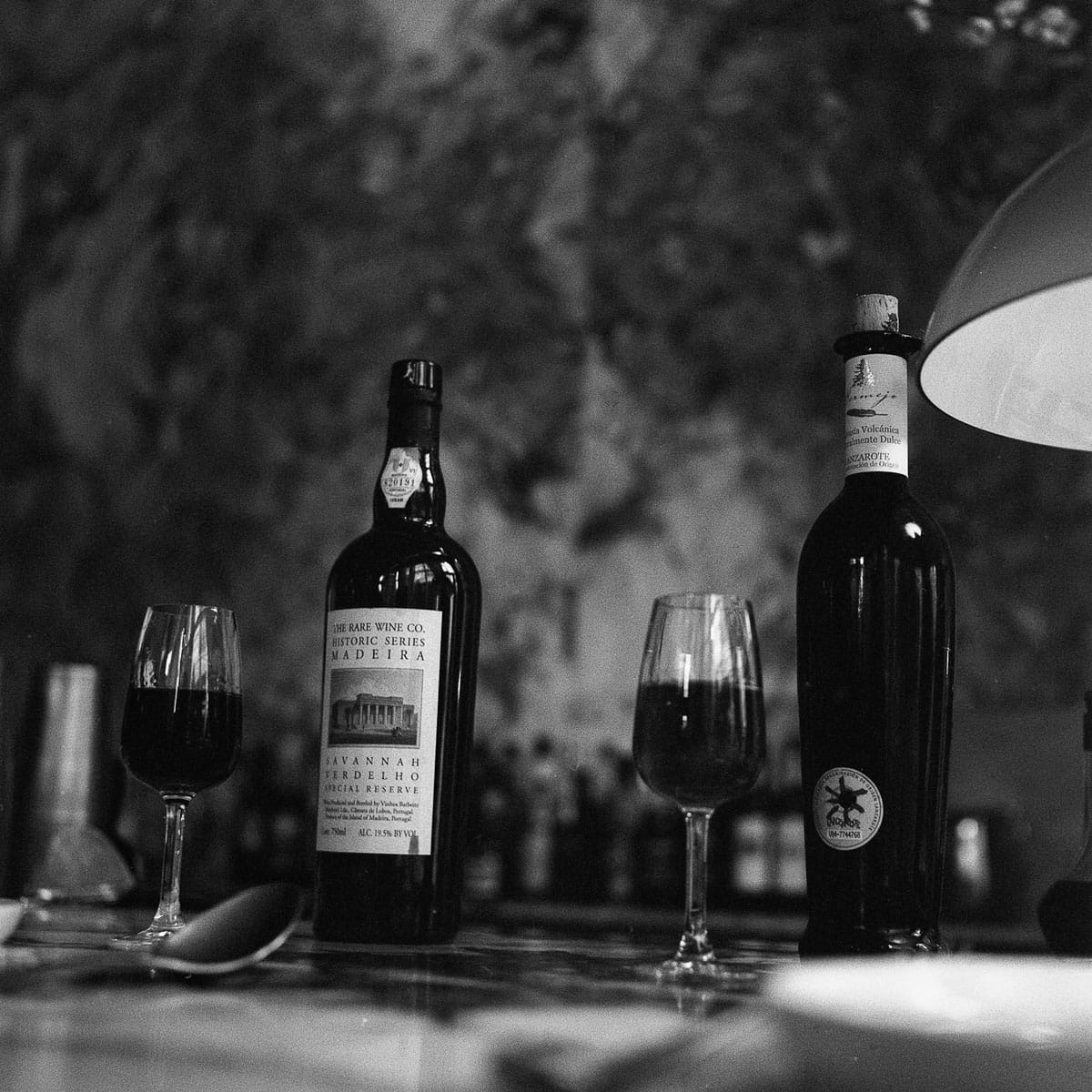
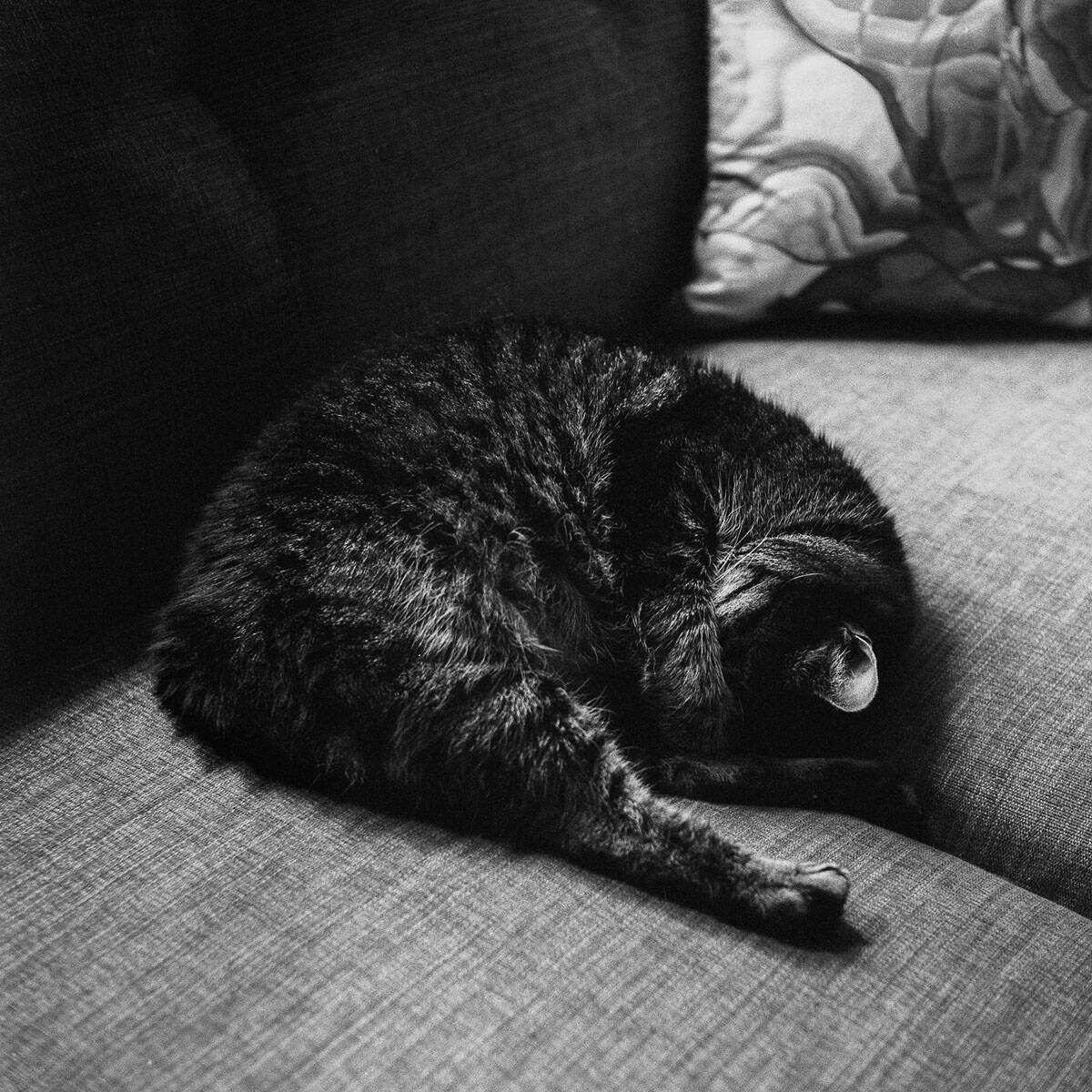
Next Up: Developing
Before developing, my first stop was the Ilford HP5+ datasheet. I decided to use Ilford DDX for developing because the datasheet provided times for pushing to 3200. The issue for pushing beyond 3 stops is Ilford does not recommend it and doesn’t give development times.
My first idea was to write down all of the times and try and discern how much to increase the interval for each stop. For example, from box speed to 400 is only 1 extra minute of development time; from +1 to +2 is 3 minutes, and so on. I couldn’t find a true pattern, although I generally felt at least doubling the interval was safe. I also dug deep on some forums to find recommended development times.
For example, I read that someone had tried pushing 4 stops and developing for 27 minutes, but they felt the negatives were underdeveloped and 35 minutes was better. I read a few articles of people pushing HP5+ up to 5 stops, but they didn’t share their times.
Eventually, I developed at these times:
- Box speed: 9 minutes*
- +3: 20 minutes*
- +4: 35 minutes
- +5: 55 minutes
*Times provided on datasheet and in MassiveDev.
I agitated each for the first 60 seconds, then for 10 seconds every minute thereafter. After developing, I followed the standard stop, fix, and wash process. I used fresh DDX each time at a 1:4 ratio and took steps to ensure the water was at 68°F/20 °C.
To avoid any mix-ups, I methodically developed each speed one at a time. I started with box speed and followed the entire development process. Once the two sheets of film were dry, I scanned and loaded into a negative sleeve and labeled it. I probably could have been more efficient in my developing, but I didn’t want to get the film mixed up.
While I’ve developed film for an hour with stand development, I’ve never agitated film for that long. Let’s just say after a few sessions of developing HP5+ at those longer times, I was sufficiently over it.
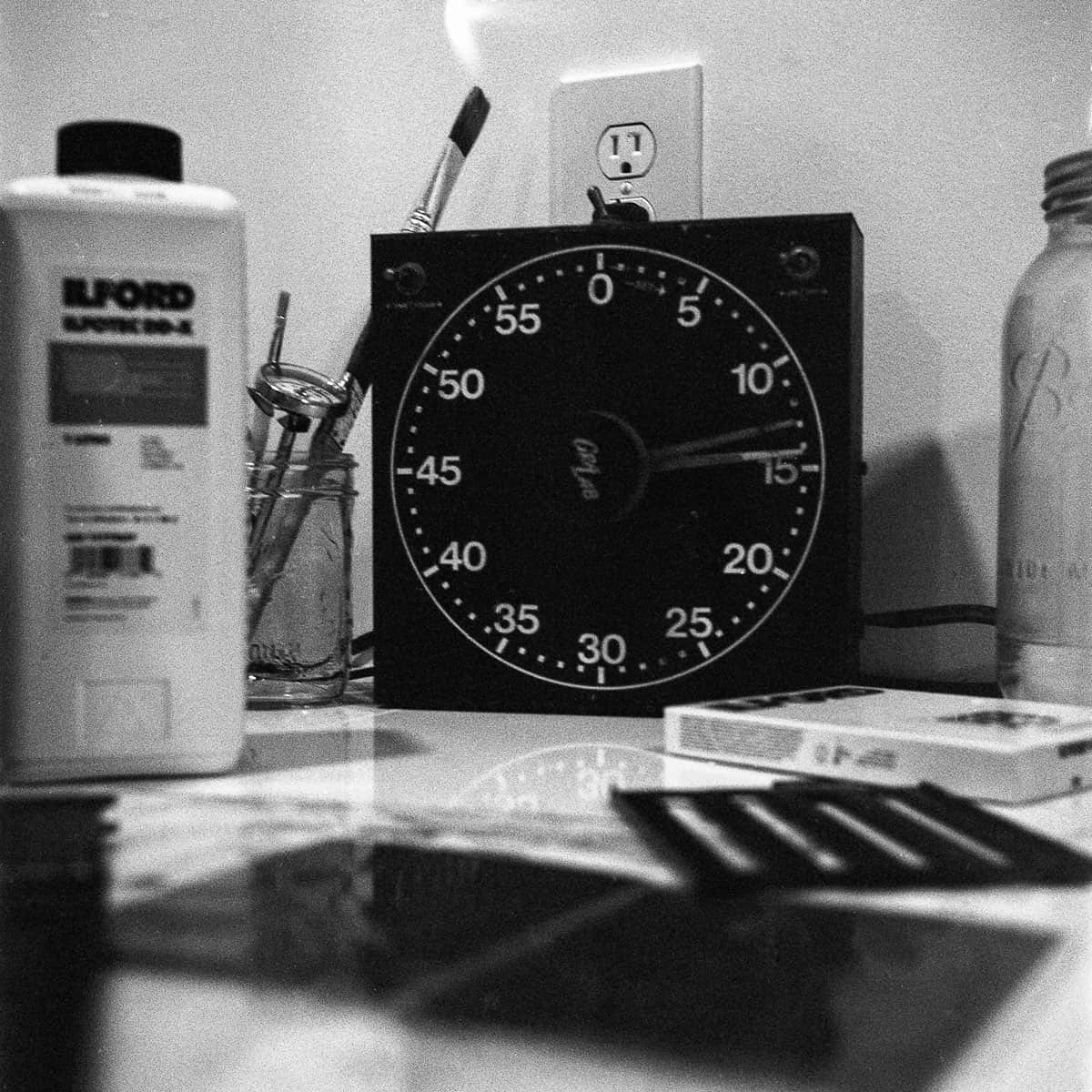



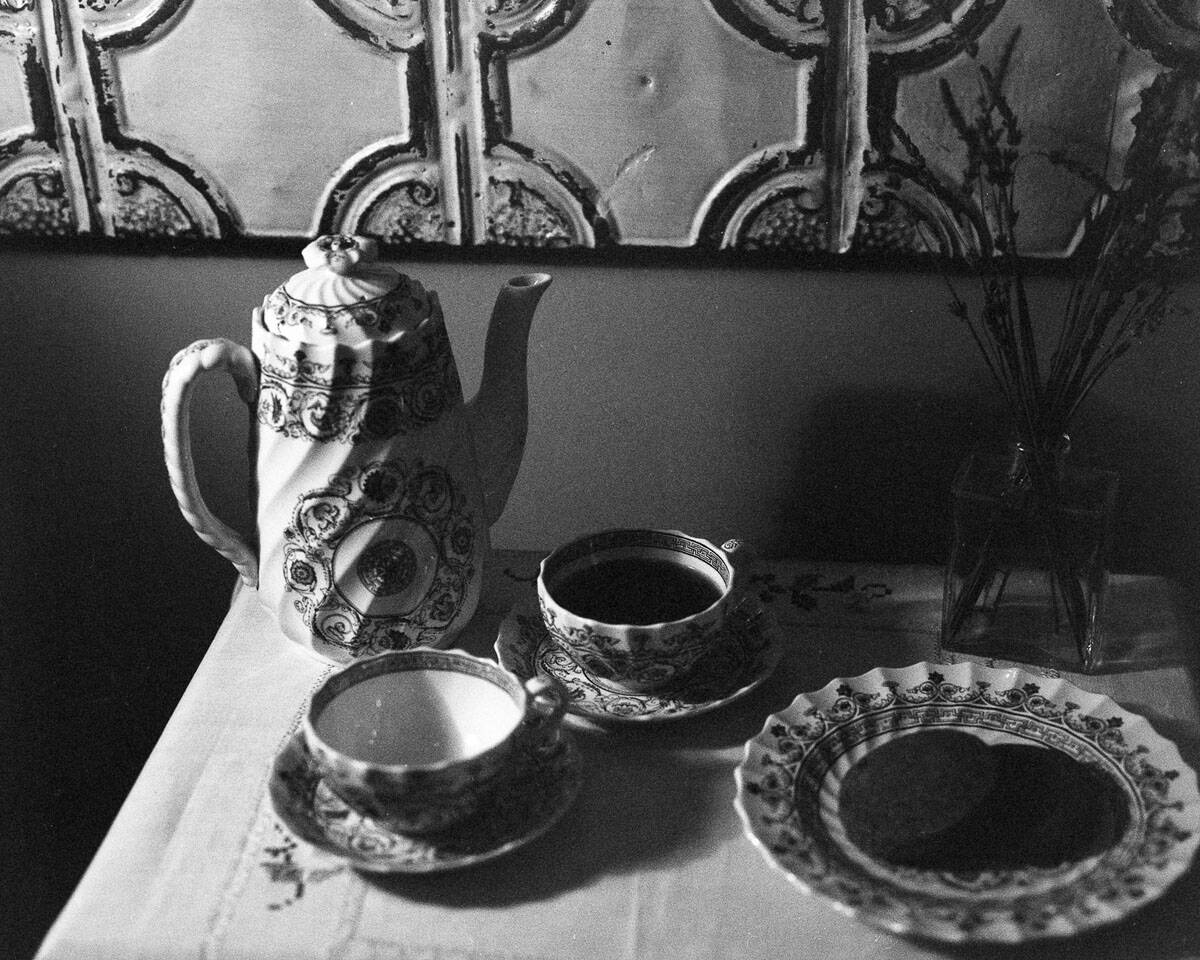
Cropped
Cropped in to see more detail.
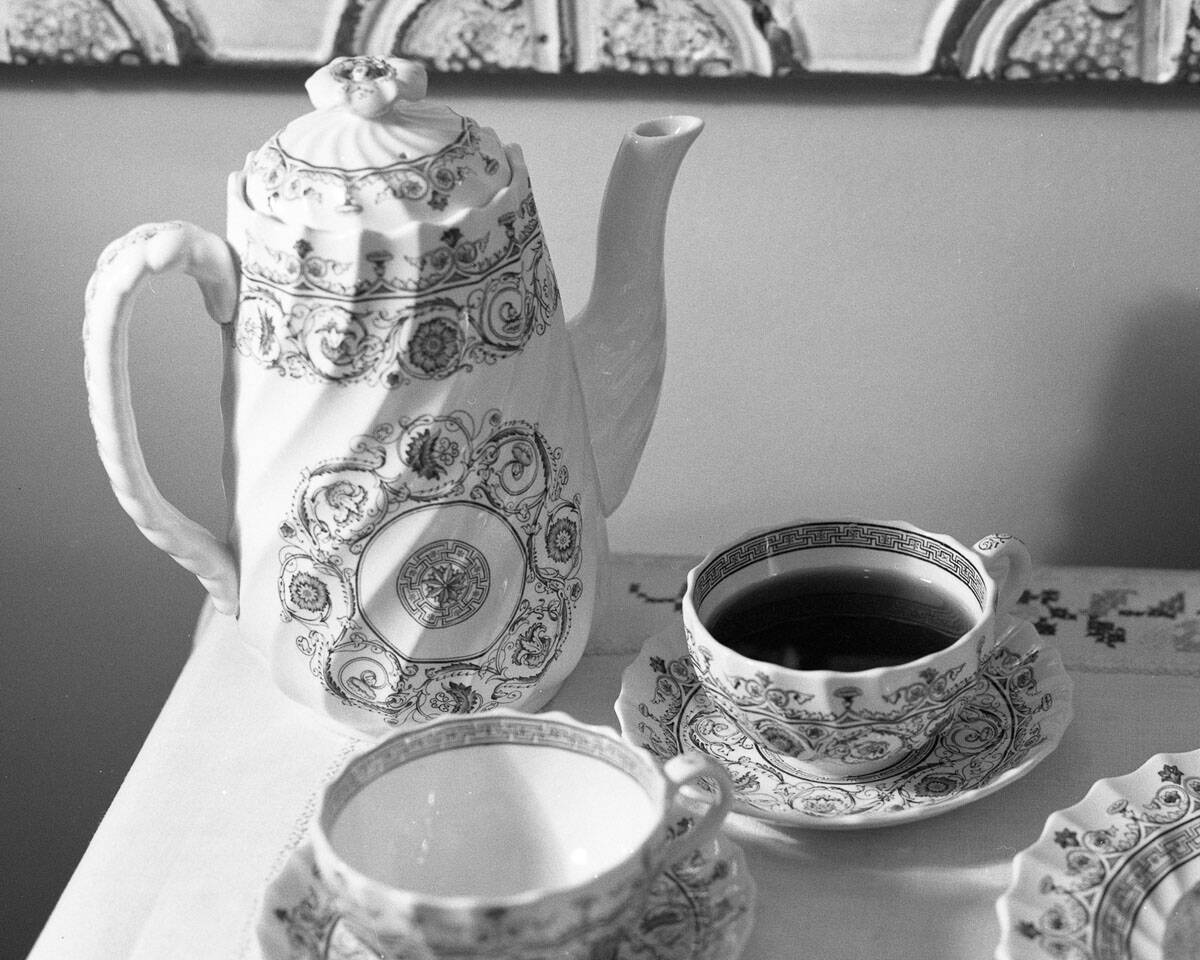

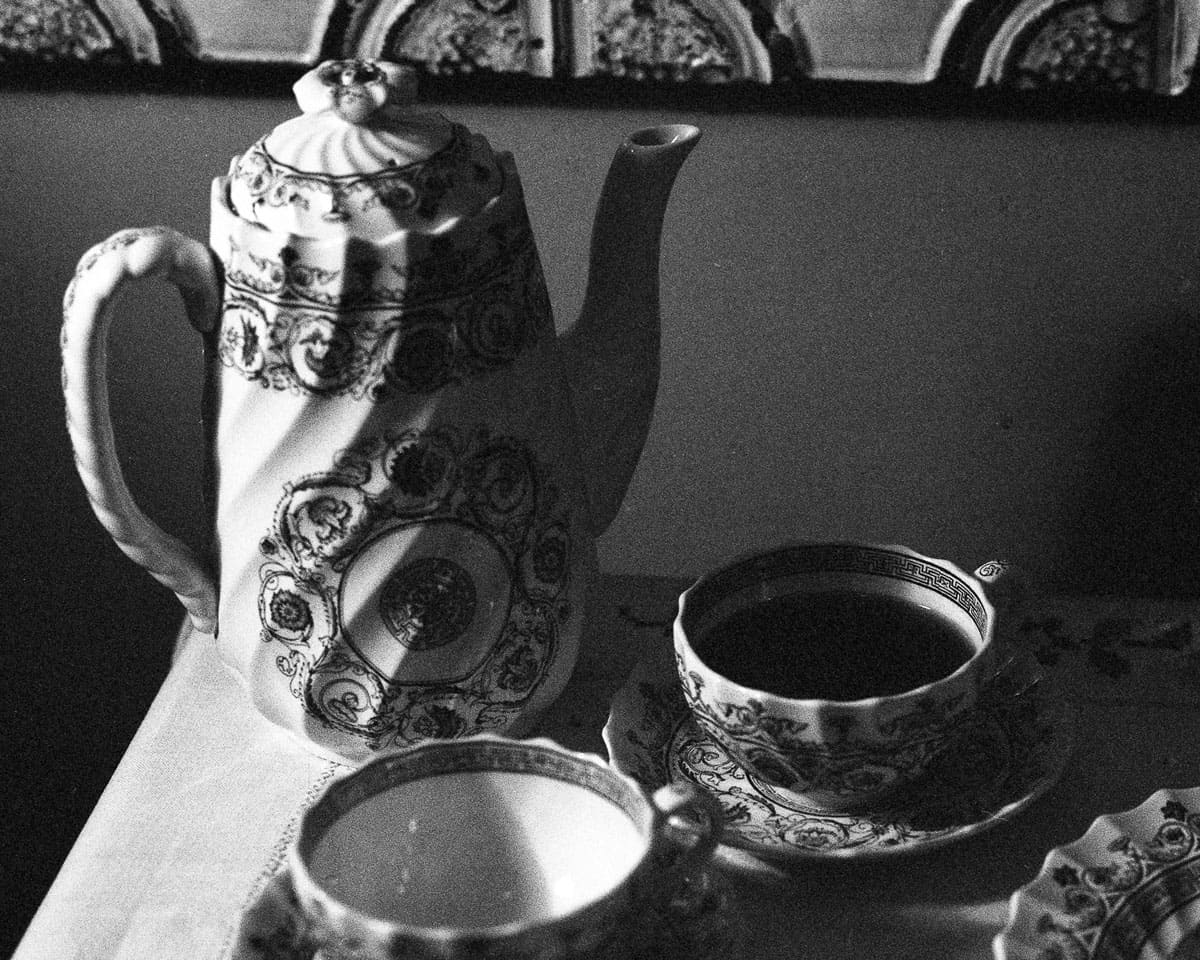
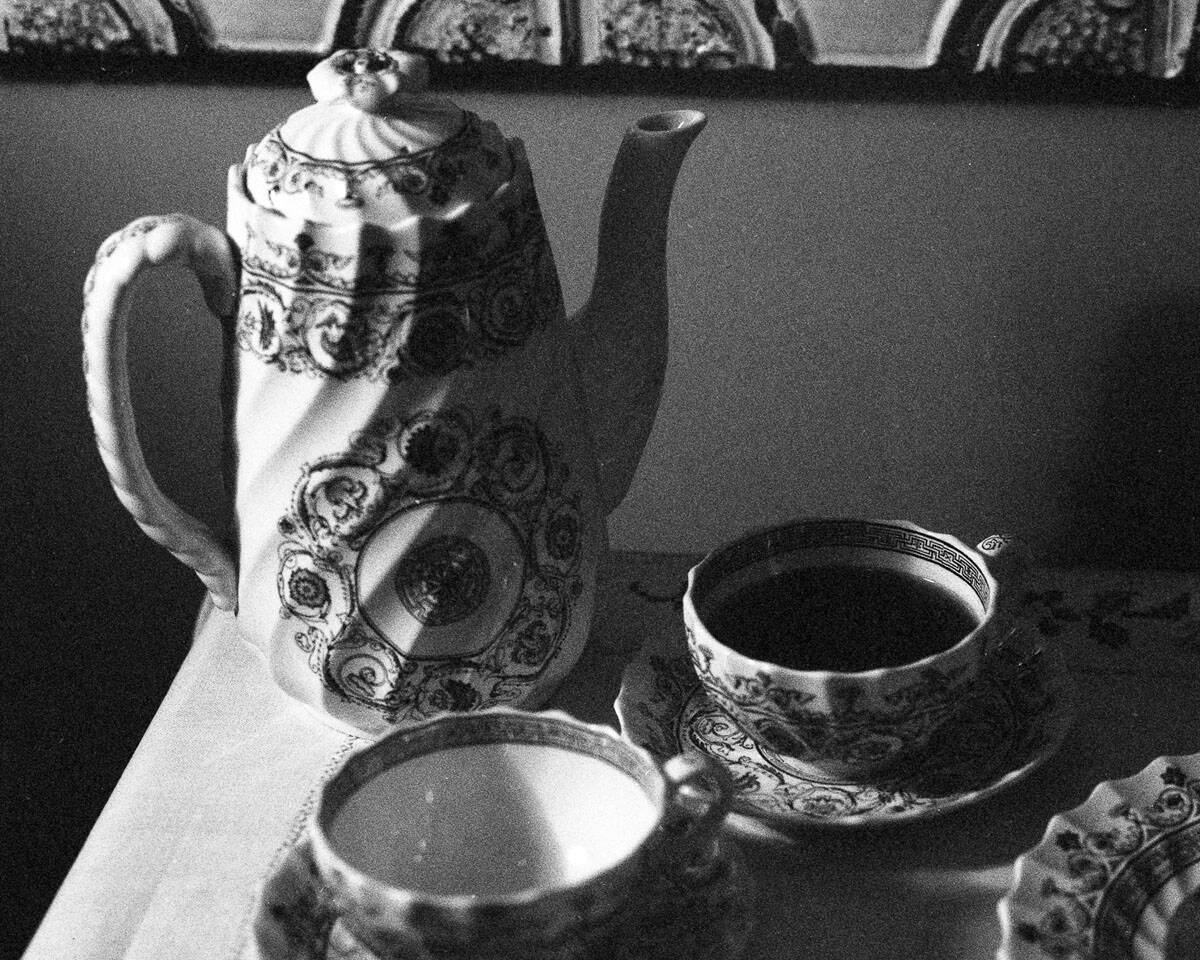
Examining the Results
I did not edit the photos other than removing dust. The scanner obviously made some decisions for me; however, you can still see how pushing affected the film. I cropped in on each photo to also show the differences.
- Box speed: Very bright (maybe a bit overexposed). Very little evident grain. Fine details in shadows.
- Pushing 3 stops to 3200: Darker image and evident grain; overall pleasing.
- Pushing 4 stops to 6400: Begin to lose the finer textures and details in the photo, especially when cropped/zoomed in, but it’s a very workable image.
- Pushing 5 stops to 12800: Grain looks like gritty sandpaper. Very underexposed, also possibly underdeveloped (even at 55 minutes). Any image clarity/crispness is mostly obliterated.



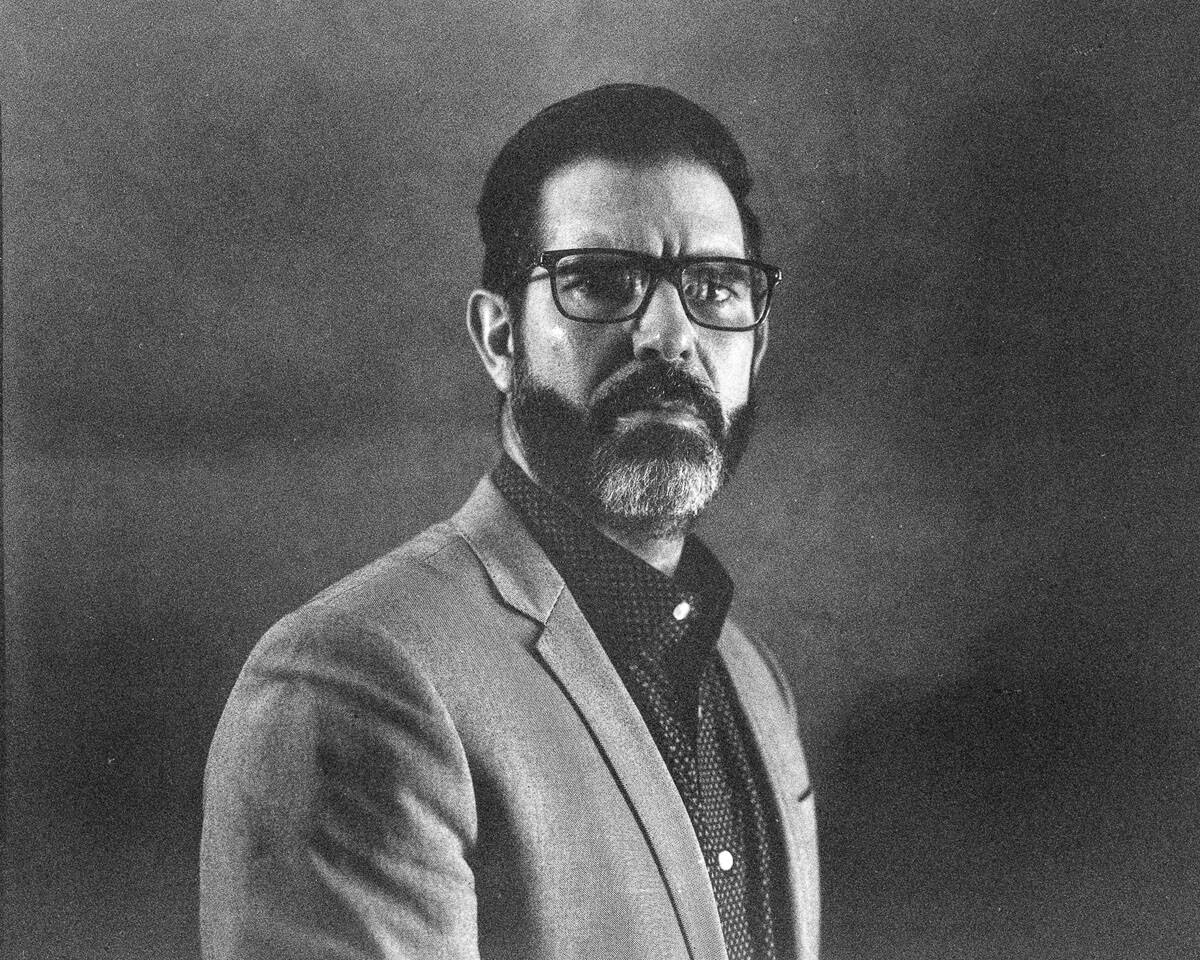
Cropped

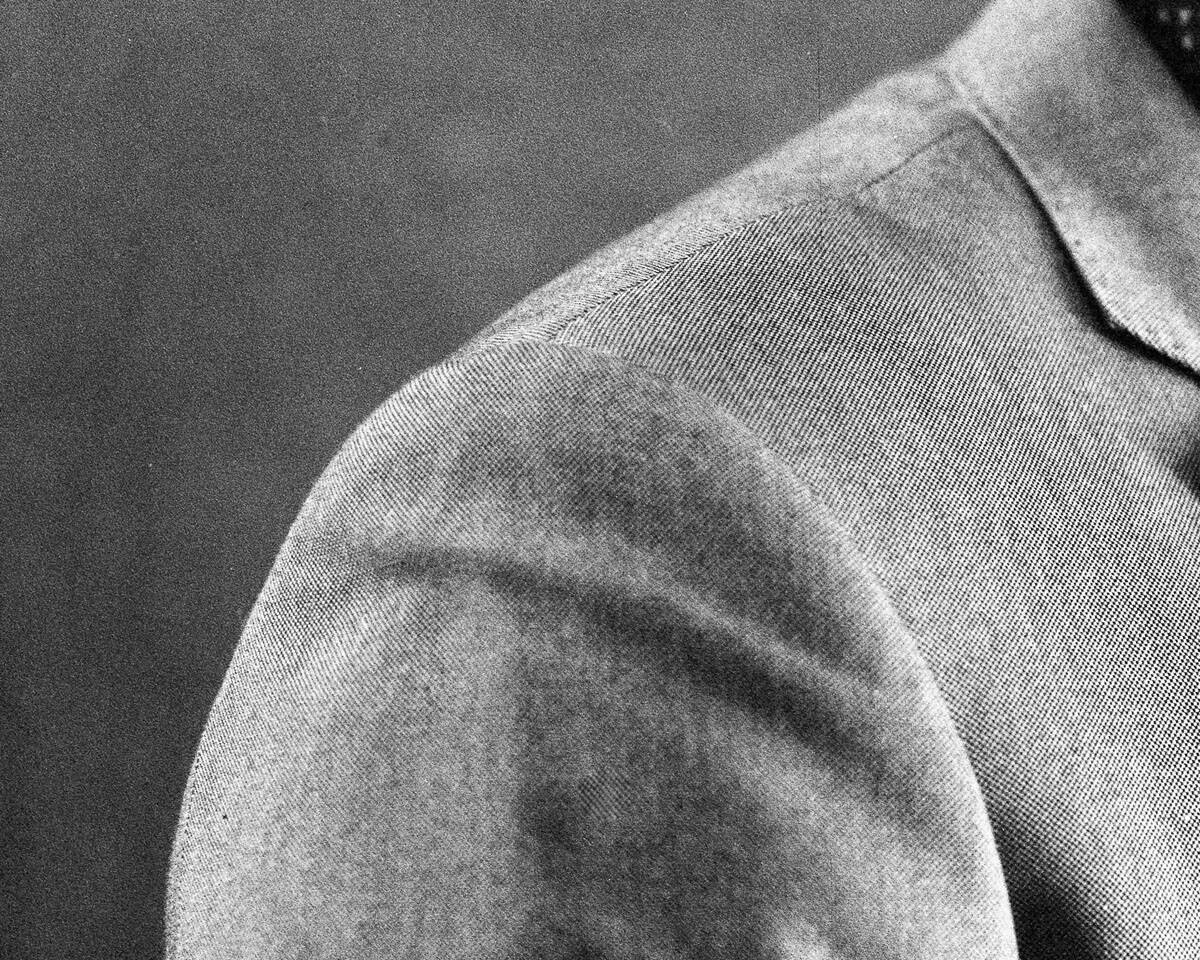


Conclusion
Pushing film is a great option anytime we need a faster speed film – as long as we understand its limitations. There is a huge trade-off as we add stops: lost shadow detail, decreased tonal range, and increased contrast. I think the overall image quality begins to degrade, especially when pushed multiple stops. I recommend you do research on your film stock and developer and then test it yourself.
For Ilford HP5+ specifically, I would feel comfortable pushing 3 or 4 stops. Over that and it feels too risky and unpredictable. And, honestly, it requires way too much time agitating in the development process.
Have you pushed film 3 stops or beyond? What do you think of pushing film? Let me know in the comments.
Thank you so much, Taylor! Taylor is a regular contributor here at Shoot It With Film, and you can check out her other articles here, such as Enlarging a Negative for Contact Printing: The Analog Process and B&W Film Comparison: Are Kentmere 400, Rollei RPX 400, & AgfaPhoto APX 400 the Same Film?.
You can also check out more of Taylor’s work on Instagram.
Leave your questions about pushing Ilford HP5+ below in the comments, and you can pick up some Ilford HP5 for yourself here on Amazon.
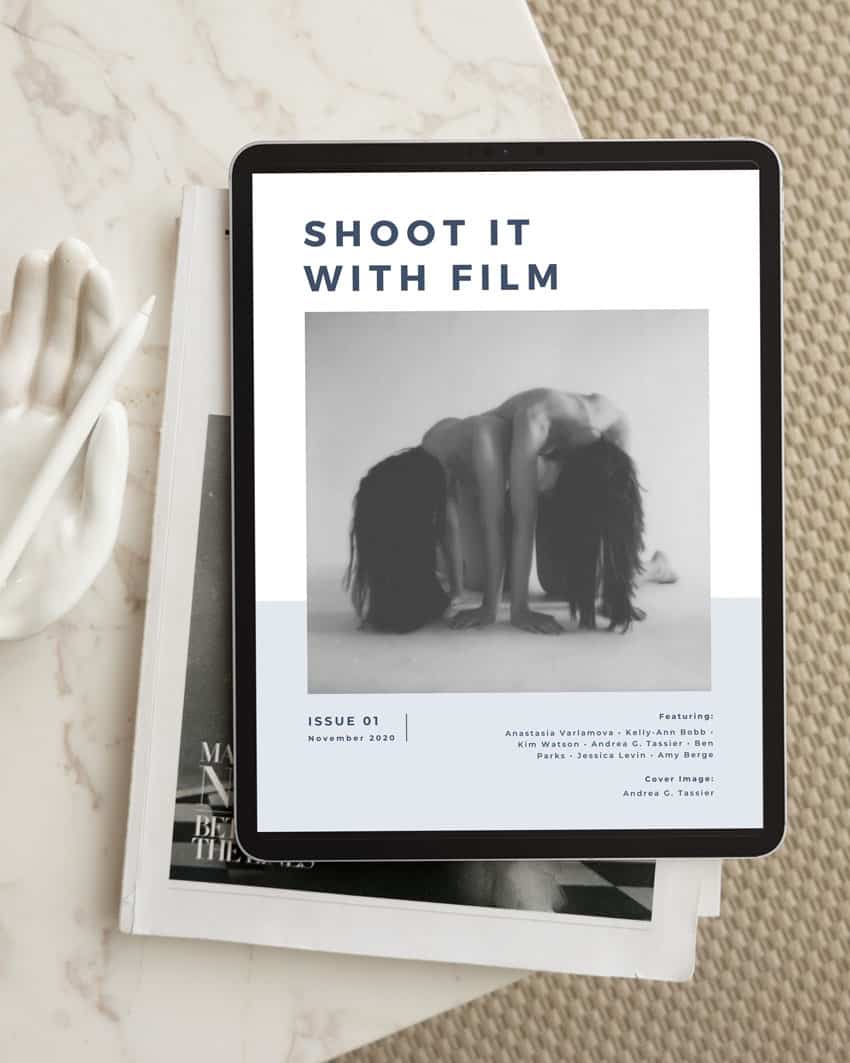







Blog Comments
Curtis Heikkinen
September 19, 2025 at 9:30 am
Nice article, Taylor! Since I send all my film to a lab, I have not pushed film very often. It seems to cost more to develop film when shot at an ISO other than box speed. I certainly found the results of your testing to be most interesting. I might try pushing a little more often in light of your article. Thanks for posting this!
Taylor Blanchard
September 20, 2025 at 7:41 am
Curtis – thank you for the comment! My guess is labs charge more to push film because they can’t batch develop. That might be one of the reasons I didn’t push film much when I was sending to a lab. Please let me know if you push more film and what you think of the results!
Jondr
September 19, 2025 at 11:54 am
I push film all the time, paticularly for pinhole photography. The exposures are long anyway and the pictures are muddy. If I’m out with fomopan 100 o a dull day I just pushed it to 400, as waiting for an hour is to long for me.
Its a fun thing to do. I often just stand dev in rodinal for 2 hrs. Its usually exposed adequately for my taste. I prefer extream contrast most of the time.
Thanks for doing the tests.
I don’t think your 5 stop tests look any worse than 3200 pushed by a stop.
Taylor Blanchard
September 20, 2025 at 7:43 am
Jondr – I always appreciate your comments! That’s so interesting – I shoot a bit of pinhole but have never pushed when shooting. I’m going to steal that idea!
I should push 5 stops a few more times so I get a better feel for the results.
Thank you again,
Taylor
Therese Kirchner
September 19, 2025 at 12:41 pm
Thanks for this article! I also push film on occasion, but find it hard to find the developing times on the massive dev chart or on the data sheets. Often, I’ll push using HC110 and mix the concentration stronger, but I have no idea how many extra stops that gives me- it does give me more contrast, loss of details in the shadows, etc, but sometimes it will save my roll when I’ve accidentally shot it at the wrong speed. (This usually happens when I’m shooting different film in different cameras and forget to adjust my light meter). When I’m looking at dev times of +15 minutes and have to agitate every 30 seconds, I understand why labs charge so much for pushing.
Taylor Blanchard
September 20, 2025 at 7:57 am
Therese – so great to see a comment from you. Interesting idea to mix the developer at a higher concentration. I certainly struggled figuring out how long to develop when pushing beyond what the datasheet says. Next, I might try pushing and then stand developing just to see what happens (and save my arms from all that agitation!) Take care,
Taylor
Walt
September 19, 2025 at 3:17 pm
Thanks – matches well with my experiences. Most recently were two rolls of HP5+ pushed to 3200 and 6400 and then developed in L-110 (HC-110 equivalent). With 35mm film, the results had significantly more grain than “proper” exposure and development, but that was my desire for this project. Thanks again for everything you do – keep burning photos onto a silver gelatine mix!
Taylor Blanchard
September 20, 2025 at 8:22 am
Hi Walt – excellent – I’m glad to hear you had similar results (that means I didn’t mess up!) What project were you working on?
Justin Lintecum
September 20, 2025 at 7:34 pm
Push it real good! now its stuck in your head too lol.
I haven’t pushed any film at home but did get the lab to push Porta 400 +2 one time and turned out good. Most labs I use will only do +3. You may also save money by pushing instead of buying higher speed film. I might try some Kentmere 400 to +3 sometime. your +3 and +4 looked pretty good! Thanks for testing this for us Taylor
Taylor Blanchard
September 22, 2025 at 10:40 am
Hi Justin! I love the idea of pushing Kentmere. Let me know when you do it. It’s a great point about pushing film to save money versus buying a higher speed film. My guess is labs don’t want to mess with more than 3 stops given the unpredictability.
Also yes now that song is in my head and I’m transported back to a middle school dance!
Donald
September 20, 2025 at 11:15 pm
Back in the dark (literally) ages when I was in high school, we routinely pushed Tri-X two stops shooting football games at night, with pretty good results. Since then, I haven’t really done any pushed film. I’m interested in exploring it; this Ilford looks pretty good at three stops.
Taylor Blanchard
September 22, 2025 at 10:42 am
Thank you for the comment Donald! I bet Tri-X pushed was great for night sports photography. Do you still have those negatives? I’ve pushed Tri-X two stops but not further – I should try that next. Hopefully you push some film again soon. Take care.